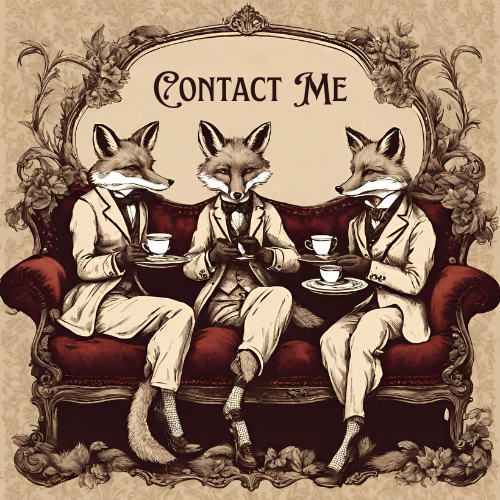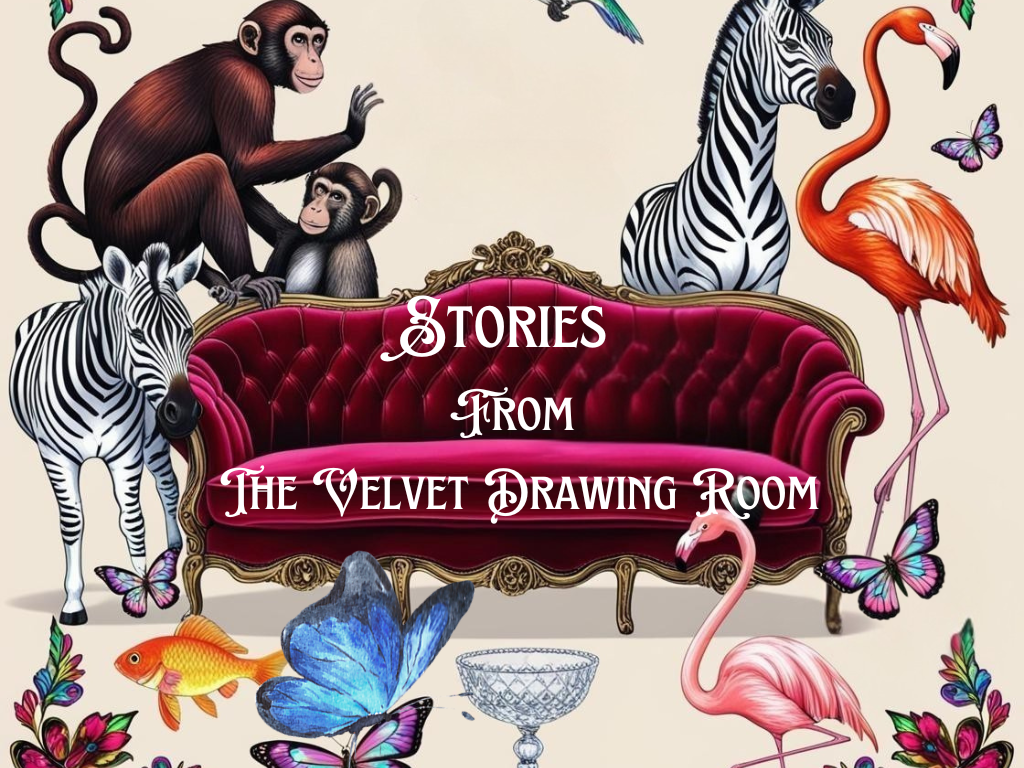
Sir Vauncey Harpur Crewe and the Magic of Calke Abbey
I walked through the doors at Calke Abbey and immediately saw a scene of utterly faded glory of this spectacular and important grade I listed country house.
Calke Abbey in Ticknall, Derbyshire speaks to everything we know about the decline of England’s big houses, but it delivered much more than the usual story of “upstairs, downstairs” life and class system.
Because the voices of those who had existed within it could be heard screaming out from every room. They talked about their privilege and how it had imprisoned them in an almost fantasy world of excess and obsession.
This world had lasted for over three hundred and fifty years before it crumbled around them, and they lost everything.
In 1985 the last heir of Calke Abbey gave up the house in lieu of paying £8million of inheritance tax, and it was taken over by the National Trust who have deliberately made only essential repairs.
No renovations have been made since this house needed to be left as it was – to testify to its adventures.
photos: Dorne Lovegrove
The fabulous and breathtaking taxidermy displays of Sir Vauncey Harpur Crewe and his family
photos: Dorne Lovegrove
Breathless
What we see of the interior at Calke Abbey is exactly how it was left on the day it was surrendered.
Long-horn cattle stare down from the walls in the entrance hall; in small rooms that became the enforced living quarters of the last heirs of the family, golden eagles and owls, foxes and hares stand still forever, holding their breath.
Bells upon the walls, once ringing to signal to the servants that service was needed, are now forever quiet.
Death defeated
The interior of the house is faded, but the taxidermy still lives on in its original form and condition in the most fabulous display cases that are piled high in almost every room.
The survival of the taxidermy seems to mock the fading state of the house and will long outlive its ghostly voices.
At its very essence, the taxidermy has already defeated death once.
At Calke Abbey it seems to defeat death once more, as the people disappeared, and the building was abandoned.
Taxidermy Soul
I found the taxidermy displays absolutely breathtaking.
Of museum quality, they were the soul of the house.
Without them the house would have been just a crumbling country house whose inhabitants’ lives had been forgotten.
The taxidermy and natural history collections, although they are paused themselves, speak up for the ghosts of a bygone era; they tell the story of the Harper Crewe family who came to Calke Abbey in 1704.
Sir Henry Harpur Crewe
Let’s begin with Sir Henry Harpur Crewe, the 7th Baronet (1763–1819), who was also known as the “isolated baronet” for his withdrawal from polite society.
He further fought society’s rules by scandalously marrying a lady’s maid named Nanette Hawkins.
Sir Henry was a man of “superior understanding and cultivated mind” as evidenced by the wonderful and extensive library he created at Calke in 1805.
His grandson, the 9th Baronet, Sir John (1824-88), and his great grandson, the 10th Baronet, Sir Vauncey (1848-1924) would become the Gentlemen Collectors of the Victorian period who filled the house with taxidermy and display cases of mineral and organic specimens.
photo: Dorne Lovegrove
The inimitable
Sir Vauncey Harper-Crewe
10th Baronet
1846-1924
As a child, Sir Vauncey Harpur Crewe had shown a love of natural history. His childhood bedroom at Calke with its grubby blue Victorian wallpaper, and a bed scattered with taxidermy and its floor piled with old childhood toys, is witness to his world of privilege and indulgence.
Its said that he was socially aloof and took the Victorian fashion for collecting stuffed birds and animals to new levels of obsession, once reportedly hiding in Calke woods with the gamekeeper to avoid unwanted visitors and later said to be at his happiest spending substantial amounts of money ordering his glass cases of specimens to fill the Bird Lobby and other rooms at Calke.

The eccentric world of Sir Vauncey Harpur Crewe
It was a world of eccentricity, where servants were hidden from sight by moving through tunnels under the house, and where the inhabitants of the house were free to use their time as they wished, in isolation with no responsibilities or need to deliver anything, except pleasure for themselves.
He was educated privately at Calke Abbey, and the secluded setting provided the perfect vantage point from which to study the birds, animals, plants and natural sciences that so enthralled him.
He displayed from a young age some of the family’s more extreme traits of eccentricity, and this soon became an all-consuming obsession. These days we may have a label or a name for this type of personality, and it seems to me that possibly there was Autism Spectrum Disorder in the family. We will never know, but his father Sir John had married his cousin Georgina Stanhope Lovell and it is possible that some inherited family traits were intensified.
A prodigious talent, Vauncey wrote the first of a two volume Natural History of Calke and Warslow, at only twelve years of age. Alongside the more commonplace childhood lessons he was taught the art of taxidermy and young Vauncey saw the estate more as a private game reserve, with plenty of birds to shoot and study.
A lifelong obsession of Sir Vauncey Harpur Crewe
Sir Vauncey Harpur Crewe was in the prime of his adulthood during the 1880’s which was the height of foreign exploration and the obsessive gathering of new species from foreign lands, but it appears that the Calke collections are not so much focussed on the spoils of foreign trips, but on the game from the family land.
Vauncey’s favourite items were butterflies, birds and eggs and he was known to often disappear into the grounds at Calke, particularly during social occasions, to hunt his own beasts, which were then stuffed and mounted.
The collection had already been started by his father, and by the time of Sir Vauncey’s marriage to Isabel Adderley in 1876, many of the hundred or so rooms at Calke were out of use, because they were piled with cases of stuffed animals, fossils, shells, artworks, and unused antiques and were in chaotic disarray.
I think we can safely label the Harpur Crewe family as hoarders!
Married to his collections, not his wife
Unfortunately for his new wife, Isabel, it seems their widely celebrated ceremony was the high point of the union, and they swiftly settled into separate lives and lived separately, as her husband’s reclusiveness intensified.
Unaware of his quirks, she had much to acclimatise to, as year by year the house was cluttered with yet more of Vauncey’s treasures, of increasingly museum proportions. These specimens had come from his own hunting, had been acquired privately, and sourced and bought from all the sales of major collections in Britain over a period of 50 years.
To preserve his collection, he insisted the temperature be kept as consistent as possible, and the offence by any servant of letting any of the constantly burning fires go out was met with a swift letter of dismissal.


1924-1925
Sir Vauncey Harpur Crewe died in December 1924.
The major part of the collection that his father, Sir John, had started and that Vauncey had continued to develop, with many examples of rarer species, was sold at auction in November 1925 at the famous Stevens’ Auctions in Covent Garden, London. (Stevens was the go-to auctioneer for many collections from the big country houses). The decline of the house was accelerating, and the financial pressures were increasing.
There were four sales in all at Stevens in 1925/1926 for the Calke Abbey taxidermy collections. The first day of the sale for Birds and Mammals fetched about £7,770 and in today’s money that’s equivalent to about £50,000.
Many of the rarer birds with Sussex data were purchased at the auction by A.F. Griffith and presented to Brighton Museum (Frost 1987).

Download the auction catalogue with the details of the contents of the sale of Birds and Mammals here
Read more about the Stevens Auction Rooms also on the website of The Natural History Museum
Read more about the Stevens Auction Rooms on the website of The British Museum
THE LAST WORD
Sir Vauncey Harpur Crewe was survived by his wife, Isabel, and four of his five children.
Hilda Ethel (b. 1877 d. 1949), Winifred (b. 1879), Richard (b. 1880 d. 1921) |Airmyne (b.1883 d. 1958), Frances (b. 1887 d. 1960)
Upon Vauncey’s death, the Baronetcy became extinct like some of his natural history specimens, since the title is only passed to first sons. His son, Richard, who died in 1921 of cancer had left his assets to his sister, Hilda, on the condition she adopted the name Fynderne, which had been Richard’s middle name and related to the location of one of their many family properties. Bemused, Hilda complied, but dropped the name after Richard’s estate was inherited. Another one of the many eccentrities of the family.
Beautiful things
do live forever
Discover more from thevelvetdrawingroom.co.uk
Subscribe to get the latest posts sent to your email.



















































